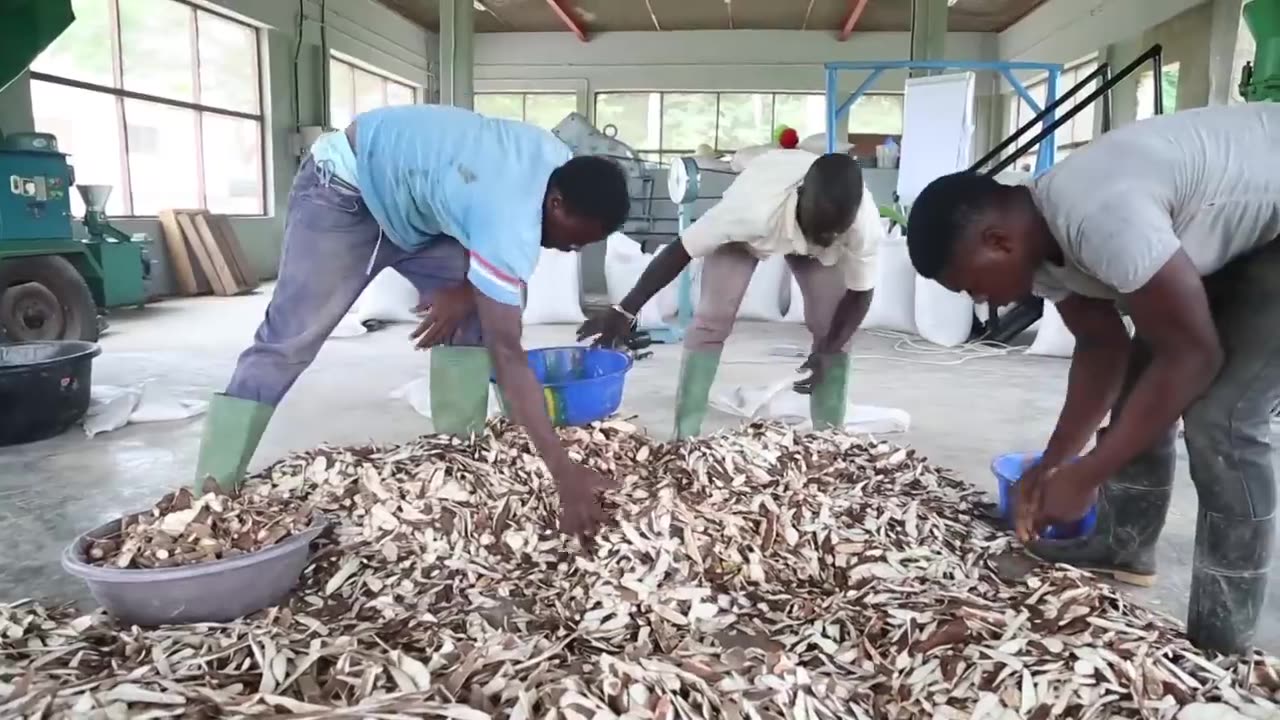Premium Only Content

Transforming cassava peels into animal feed
Transforming cassava peels into animal feed is an innovative and sustainable approach that addresses both environmental and economic challenges. Cassava is a widely cultivated root crop, and its peels are a byproduct generated during processing or consumption. Traditionally, these peels are considered agricultural waste and pose disposal challenges.
However, researchers and farmers have discovered that cassava peels can be transformed into nutritious animal feed, offering a valuable solution for utilizing this resource. The process involves treating and processing the peels to enhance their nutritional value and make them suitable for animal consumption.
The transformation typically includes several steps. First, the peels are thoroughly washed to remove dirt and contaminants. Next, they undergo a drying process to reduce moisture content and enhance their shelf life. This can be achieved through sun drying or using mechanical dryers, depending on the available resources.
After drying, the cassava peels are often milled or ground into smaller particles, making them easier for animals to digest. This step also helps to improve the overall texture of the feed. The resulting product can then be mixed with other ingredients such as grains, vitamins, minerals, and protein sources to create a well-balanced animal feed.
Cassava peels are rich in carbohydrates and fiber, making them particularly suitable for certain livestock animals such as pigs, poultry, and ruminants. The feed derived from cassava peels can provide an affordable and sustainable alternative to conventional feeds, contributing to the reduction of production costs for farmers.
Moreover, the utilization of cassava peels as animal feed has environmental benefits. By converting the peels into a valuable resource, it reduces waste generation and potential environmental pollution that could occur during improper disposal.
Overall, transforming cassava peels into animal feed offers a dual advantage of reducing waste and providing a cost-effective and nutritious feed source for livestock. This sustainable practice can contribute to improved animal nutrition, reduced environmental impact, and increased economic viability for farmers in regions where cassava is cultivated.
-
 17:21
17:21
China Uncensored
10 hours agoYouTube Censorship Is Destroying China Uncensored
7.97K37 -
 12:10
12:10
MichaelBisping
22 hours agoBISPING: "UFC is BACK and STACKED!" | UFC 311 / UFC 312 (2025 BREAKDOWN)
13.5K4 -
 15:38
15:38
Misha Petrov
18 hours agoKim Kardashian’s DISTURBING "Santa Baby" Music Video
12.3K20 -
 23:28
23:28
Degenerate Jay
22 hours ago $0.54 earnedStar Ocean - The RPG Series That Deserves Better
6.16K2 -
 1:04:51
1:04:51
State of the Second Podcast
15 hours agoCarrying on Campus: Rights or Risks? (ft. Cheryl Todd)
3.97K1 -
 21:09
21:09
Dr David Jockers
20 hours ago $0.35 earnedAutophagy Fasting: What Happens to Your Body + Best Autophagy Enhancers
4.37K1 -
 2:31
2:31
BIG NEM
11 hours agoCOMPLETE EMASCULATION: His Relationship is TOAST!
11.3K1 -
 3:11:17
3:11:17
FreshandFit
9 hours agoRed Flags In American vs Foreign Girls
84.7K65 -
 4:44:05
4:44:05
Sgt Wilky Plays
11 hours agoGoing Ranked....but why? I dont know
87.4K6 -
 1:00:48
1:00:48
BlaireWhite
1 day agoThey're Lying About The "Drones". Something Big Is Happening.
52.9K30